




 |
   |
 |
|
Gösta Linderholm Buzz Linhart Anita Lipnicka & John Porter |
Liquid Jesus Lisa o Piu Litmus |
Little Aida Little Free Rock |
Liv på Jorden Live |
Limelight (UK) see: |
 |
 |
In Kommer Gösta (1973, 31.27) **½/T |
|
| Herr Fantasi Gamle Charlie Sjunger Blues (Good Time Charlie's Got the Blues) Med Många Kulrta Lyktor Stockholm är en Spaderstad Sista Visan Va' en Soli' Da' (Was a Sunny Day) Ungkarlsdröm U.P.A. Påtalåten |
Natten är Nära Sicken Kväll! (Such a Night) Gycklar David (Gypsy David) |
|
Current availability:
Mellotron used:
It seems Gösta Linderholm's background was as a jazz clarinettist, although his solo debut, 1973's In Kommer Gösta, is a folky pop/rock album, typified by the likes of Stockholm Är En Spaderstad, Va' En Soli' Da' and jaunty closer Gycklar David, a translation of Woody Guthrie's Gypsy David. Anything listenable? Folky opener Herr Fantasi and the darker Påtalåten.
The curiously-named Björn J:son Lindh (I always thought he should've been a Mellotron user) plays that white box full of tapes on two tracks, with background strings on Sista Visan and a distant flute line on Ungkarlsdröm U.P.A. I couldn't honestly recommend this on either musical or Mellotronic grounds, so I shan't. Hideous sleeve design, too.
Pär Lindh Project (Sweden) see: |
 |
Pär Lindh & Björn Johansson (Sweden) see: |
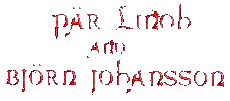 |
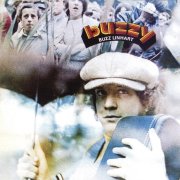 |
buzzy [a.k.a. Buzzy's buzzy] (1969, 44.46) ***/TTYellow CabStep Into My Wildest Dreams Willie Jean Wish I Could Find Sing Joy End Song |
Current availability:
Mellotron used:
Buzz(y) Linhart was originally known for his mallet skills, becoming a vibraphone virtuoso at a young age. After spells backing noted Greenwich Village doyen Fred Neil and others, he recorded his first solo album, buzzy [sic.], in London in late 1968, released the following year. The album is dominated by side two's eighteen-minute raga-rock Sing Joy, encapsulating Linhart's multiple influences in one long-form piece, featuring what sounds suspiciously like a hurdy-gurdy. The rest of the record consists of bluesy acoustic material like Tim Hardin's Yellow Cab and Wish I Could Find and the lengthy, vaguely psychedelic Willie Jean.
MkII Mellotron strings from Phil Ryan (Eyes of Blue) on Willie Jean, sounding not unlike a Mellotron-soaked version of Python Lee Jackson's In A Broken Dream and End Song, which doesn't. buzzy is a bit of a mixed bag, a couple of the shorter tracks failing to hold the attention and the epic, while groundbreaking, does go on a bit, if we're going to be brutally honest. Two decent Mellotron tracks, particularly Willie Jean, so you might want to hear those even if the rest of the album doesn't appeal. Linhart has reissued the album as Buzzy's buzzy, seemingly changing the track order, which makes a slight mockery of End Song, but I expect he knows what he's doing.
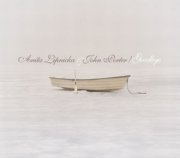 |
Goodbye (2008, 41.22) ***/½ |
|
| Run for Your Love Down By the Lake Lonesome Traveller Good to See You (Bill's Song) Old Time Radio Lover Turn Around Secret Wish |
You're Not the Only One How You Doin' Today Runner Run Stone Cold Morning |
|
Current availability:
Mellotron used:
Anita Lipnicka moved to London from her native Poland in 1996, teaming up with John Porter (who has major connections with her country himself) five years later. They made three albums together, after which, although remaining a couple, they opted to work separately. Unsurprisingly, 2088's Goodbye is the last of these, a largely acoustic record with a slightly American folk vibe about it, although as with so many similar, the music seems to be largely a vehicle for the lyrics, having relatively little intrinsic value of its own, which isn't to say it's bad, just generic.
Chris Eckman plays Mellotron, with a real-sounding string part on Old Time Radio that dips in and out of the piece, although the cello on How You Doin' Today is real. Overall, then, a reasonable album, but, unless you're heavily into the style, even its forty minutes can pall. One Mellotron track, but even that's fairly minor.
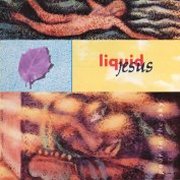 |
Pour in the Sky (1991, 49.43) ****/T |
|
| Intro Finding My Way W.H.Y.B. No Secret On My Way Better or Worse The Light Sacrifice |
The Colorful Ones Faith to Believe Feelings Flower Bleed |
|
Current availability:
Mellotron used:
When the current trend for 'stoner' bands is mentioned, everyone remembers the Masters of Reality (who are still around), but Liquid Jesus are the forgotten men of the proto-genre. Maybe they just weren't heavy enough. Anyway, after the US-only Live (***½), Pour in the Sky appeared, refusing to adhere to any of the then-current received wisdom about how rock albums should sound. Dirty, bluesy and retro, it was an album both out of and before its time, but sadly, the rivers of musical change seem to have left them stranded on a sandbank somewhere, rather than at the forefront of the burgeoning aforementioned movement.
Various 'authentic' keys are used on the album, including producer Michael Beinhorn's Mellotron, if on two tracks only, with almost-inaudible strings on No Secret and rather more upfront cellos/strings/flutes on the acoustic Zeppelinesque Faith To Believe. These hardly qualify the album as a 'Mellotron Record', but for fans of retro hard rock, this is a more than worthwhile purchase.
 |
Behind the Bend (2010, 28.28) ****/½Was it the MoonSimplicity Dream of Goats World Falling Down Child of Trees Gong for Hours (Jupiter's Under the Moon) |
Current availability:
Mellotron used:
Lisa Isaksson's Lisa o Piu released their second (and, to date, last) album, the beautiful Behind the Bend, in 2010, gaining instant acid folk credibility with their luminous, ethereal sound, all light-as-air vocals, zithers, glockenspiels and violas. At under half an hour, it doesn't have time to drag, but every track has its strengths, notably the twelve-minute Child Of Trees and closer Gong For Hours (Jupiter's Under The Moon), which is, er, three minutes of softly-struck solo gong.
David Svedmyr plays his Swedish-built MkVI Mellotron, if only just, with a distant solo female voice on opener Was It The Moon that just might be the Chamberlin sound played on a Mellotron, a flute line on Simplicity that sounds more Mellotronic than real, despite the presence of actual flautists and distant cello on Dream Of Goats. A truly beautiful record, guaranteed to appeal to fans of dark folk. Excellent.
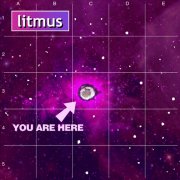 |
You Are Here (2004, 62.04) ****/TTTT½ |
|
| Infinity Drive Dreams of Space You Are Here Sonic Light Rays of Sonic Light (Theta Wave) Inductor There I Can't Be Sane |
Chime Stone Oscillator (Static Ritual) |
|
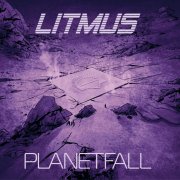 |
Planetfall (2007, 76.34) ***/TTT |
|
| Destroy the Mothership The Tempest Lost Stations Under the Sign Planetfall Psychic Projection Singularity Helios |
Expanding Universe (Twinstar pt. 2) The Machine Age Far Beyond Planetfall/Seti |
|
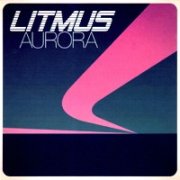 |
Aurora (2009, 65.31) ****/TTTTBeyond the SunIn the Burning Light Eos Miles Away Stars Kings of Infinite Space Ma:55°N Rift Red Skies |
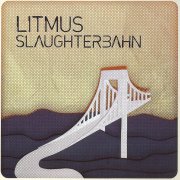 |
Slaughterbahn (2012, 47.13) ***½/TTT½ |
|
| Deeper Spark Breakout Static Streamers Satellites 1x1 Last Man Standing |
Sleepless Lights Out Kommissar Slaughterbahn |
|
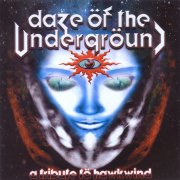 |
Daze öf the Undergröund: a Tribute tö Hawkwind (2003) ***½/T[Litmus contribute]Paradox |
Current availability:
Mellotrons used:
Am I allowed to review myself? Whatever. I joined Litmus in spring 2001, but it took us until late '03 to record anything other than demos; You Are Here is a full-length, 'proper' release and the first to utilise my keyboard arsenal properly. And it sounds like? The tribute album to which we contributed should give you a clue; while not a Hawkwind clone, we were, to quote Ken Campbell from The Secret Policeman's Ball, 'fucking close'. Actually, that's not fair; there was a more metal edge to our sound; our version of Paradox (from The Hall of the Mountain Grill), on Daze öf the Undergröund: a Tribute to Hawkwind (umlauts optional), has more bite than the original and every bit as much Mellotron (recorded in my front room, fact fans), although I wouldn't try to claim it was superior. How many covers are? It rocks, though and, in my humble opinion, ends up being one of the better tracks on the album.
You Are Here itself is a mixture of material we'd been playing for a year or two and brand-new stuff, plus several 'interludes' not designed to be played live. Infinity Drive kicks things off in grand style, complete with a ropey Hammond solo by yours truly, followed by Dreams Of Space, in a similar, though slightly more progressive style. The title track is a laid-back acoustic thing and from then on, every track has a different feel, from the almost-poppiness of Sonic Light (don't ask) through trippy dronefest (Theta Wave) Inductor to monstrous, twenty-one-minute stoner space-rock epic Stone Oscillator (Static Ritual).
 |
|
| photo: Belch | |
As you can see, my Mellotron gets in on most tracks, only Sonic Light and two short interludes being spared. And before you accuse me of instrumental nepotism, much of it was insisted upon by our bassist, Martin, who did a grand job of recording the whole thing on his hard disc system. A high string line on Infinity Drive doubles the top note of the string synth riff, although the rising string line in the verse on Dreams Of Space ended up too low in the mix, for some reason. You Are Here itself has strings, flutes and cello all going at once, sounding authentically cranky in places (must sort those pinch rollers out...), while my own little contribution to the album, Rays Of Sonic Light, is a short, Mellotron/Moog-drenched instrumental based on the synth melody from Sonic Light. Inductor is mostly laid-back Moog until it all kicks in near the end and a Mellotron string part takes over, with a weird part during the gradual slow-down at the end which is Martin's sonic trickery with something I'd played earlier. The manic I Can't Be Sane (what happens when you let your drummer write a song...) has some strings and choir buried in the mix, while Stone Oscillator features a polyphonic flute part (my idea, folks) over an initial quiet verse, before some upfront strings later on. The choirs were my idea, again, although they're fairly low in the mix.
I know it's a bloody cheek reviewing my own work, but I make the rules up around here, usually as I'm going along. So there. It's taken me over twenty years of playing in bands to finally get an album out and I'm glad to say that my eventual debut is pretty much an unqualified success. Of course I recommend it and not just to Hawkwind fans, but you'll just have to make your own minds up.
For reasons too irksome to go into here, it took us nearly three years to release our follow-up, Planetfall, although it should've been finished in time for autumn 2006 [sigh]. Well, it would be fair to say that it's a mixed bag; too long for a 'proper' label debut, including various tracks of which no-one (myself included) would let go (and let's not even go there re. the closing seconds of the record...), although it would probably have been better having a good fifteen minutes chopped off somewhere down the line. Suffice to say, my personal version of the album would be shorter and tighter... A real disappointment for me, after having such a great time at the residential studio in Wales that we used (hi, Dave), was hearing the final mix and realising how much of my Mellotron and Moog work has been mixed either low or completely out while I wasn't looking. In other words, despite the seemingly high number of Mellotron tracks listed above, many of them 'feature' parts mixed down so far that all that remains is a ghostly high string note washing around in the background somewhere, usually at the end of the song as everything else dies down.
Destroy The Mothership, The Tempest, Psychic Projection and Far Beyond all fall into this category, several of them losing Moog lines, too, although the whole-tone scale strings in Singularity and the choirs under the solo in my contribution, The Machine Age, have just about survived. The massive string swells in Helios have ended up reverbed to death and quieter than some contributions by other members that were only designed to be 'add-ons', although a genius idea of laptop guru Anton's is quite high in the mix; he mic'd up the inside of the M400 while I was playing and its mechanical noise, including the tapes snapping back are clearly audible, along with the only obvious (albeit overly quiet) bit of Moog Taurus on the album. That leaves three tracks: the mighty Under The Sign loses about half of what was recorded, although what's left sounds pretty good (watch for the pitchbend before the 'slow bit'), while Lost Stations has a full-on part which survived the cull, particularly on the chorus. Finally, the album's classic (in my humble etc. etc.): Expanding Universe (Twinstar Pt. 2). Not only is this a monster track, fitting vaguely into the same category as our debut's Stone Oscillator, but it features wall-to-wall Mellotron, with my patented 'infinite sustain' choirs over the intro (as on You Are Here's Inductor), a poly flute part on the chorus, repeated multiple times on the outro (and all played for real), plus shitloads of strings, both on the verses and during the massive 'tension/release' section in the middle, building up to an almost unbearable peak before finally breaking. Oh, and watch for the almost dissonant choir chords after the second chorus; if only I'd written them...
I left the band (on good terms) in 2007, after the 'musical differences' described above; it took them two years to release their second (and last) album for Rise Above, 2009's Aurora. Given how unimpressed I was with the material at early writing sessions, I have to say, it's an absolute triumph. Gone are the near-prog epics, gone are the punky thrashes, replaced by solid, melodic songwriting, albeit in an unmistakably space-rock style. Some things never change... It contains a mere eight tracks, although it's still over an hour long, three of them jammed into infinity and another two not exactly brief, but the vocal work all round is dramatically improved, at least melodically and harmonically, while the whole thing just seems more... focussed, for want of a better word. Saying that, it has its faults; there's still too much noodling and a couple of the songs are too long for their content, not to mention the usual 'it's too bloody long' problem, but all in all, it's fantastic. Highpoints? Kings Of Infinite Space takes forever to reach its peak, but when it does, it's worth it, while Ma:55°N Rift (band in-jokes: don'cha love 'em?) is as trippy as anything we/they ever tackled.
Mellotronically speaking, all the time my M400 sat at Martin's has obviously been beneficial. Unlike last time, he's stuck it all over the place here, mostly strings, well-played and mixed, interesting lines thrown in, sometimes echoing vocal parts. They use my 'infinite choir' trick not once but twice, to the point where it's starting to look like a 'Litmus trick'. Expect it next time round... Basically, loads of Mellotron, only marked down for its relative lack of ambition, repeating the same 'octave strings' trick from their two previous efforts. Am I sorry not to be on it? Not in the slightest. It's an excellent piece of work, but my days of providing octave strings are over, I hope.
Another lengthy delay presaged their fourth release, 2012's amusingly-titled Slaughterbahn, their shortest yet, both in overall and individual song length. A cassette is inserted into a deck and a low-fi drum track begins, suddenly replaced by the band blasting away on Deeper, a typical shorter, punchier Litmus number, like many here. Deviations include the punky Breakout, the pop/punk of Streamers and the trippy closing title track, although 'best track' award probably goes to mini-epic Sleepless, Eastern scales and all. Martin plays Mellotron, with the standard octave string lines on all highlighted tracks plus flutes on Deeper's chorus, occasionally branching out into more inventive parts before the inevitable Return Of The Octaves.
See: Daze of the Underground | Sonic Shamen
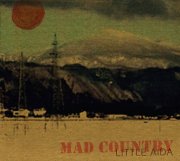 |
Mad Country (2007, 42.03) **½/T |
|
| Like it Was Before The Dam is Broken Dream Pony Played Horses Sleep Machine Ten Walls |
No Reason at the Hollywood Hotel Each Measure Shadow in the Sand |
|
Current availability:
Mellotron used:
Australians Little Aida appear to be led by sisters Susannah and Tessa Rubinstein, the latter singing lead across their second album, 2007's Kramer-produced Mad Country, released a startling eleven years after their debut. It's a downbeat, folk-inspired record, falling somewhere in between the slowest end of the indie spectrum and early '70s singer-songwriter territory, the sisters' vocals habitually being fed through washes of reverb, along with most of the instrumentation.
Kramer plays (presumably) his M400, with wavery flutes on opener Like It Was Before and distant strings on Ten Walls, neither to any great effect, sadly. This is one of those 'good for two or three tracks' albums, but even at sensible vinyl length, it rather outstays its welcome, so with so little Mellotron, I feel unable to especially recommend it.
See: Kramer
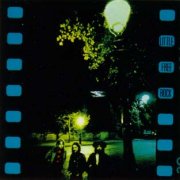 |
Little Free Rock (1969, 40.44) ***/T½Roman Summer NightsLost Lonely Blud Castles in the Sky Dream Tingle Evil Woman Age of Chivalry Making Time |
Current availability:
Mellotron used:
Little Free Rock, despite their American-sounding name, were a Lancashire-based trio whose name, unusually (uniquely?), is comprised of the meanings behind each member's names. They started as covers band Purple Haze, morphing into the proto-hard rock Little Free Rock in 1969, recording their sole, eponymous album after the usual label hassles. Like so many other bands of the day, they found themselves, through no fault of their own, unable to translate their live sound onto tape, ending up most unsatisfied with the end result. Before long, they started using African percussionists at gigs (including guys who played with Ginger Baker and a couple who ended up in Osibisa); although they were playing the same songs live, they were apparently almost unrecognisable from their studio versions. Guitarist Peter Illingworth's old website detailed their story in full; all I can say is, it's a wonder anyone ever made any money out of playing music, then or now; the high attrition rate doesn't surprise me in the slightest.
Little Free Rock isn't a bad album, loosely comparable to the likes of May Blitz, Clear Blue Sky, or maybe Stray, but it isn't a sound that's dated well, although, had the band been able to record their live sound, maybe things would have been different. Closer Making Time, at around ten minutes, is the only jammed-out piece on the record, the rest of the material being in the usual three-to-five minute bracket; while nothing especially stands out writing-wise, the whole is a pleasant enough listen. Tim Hinckley, from Jody Grind (whose chief claim to fame was an album called Far Canal; say it out loud in a London accent...), played Mellotron on three tracks, with rather unadventurous string parts on Roman Summer Nights, Blud (with a nice upward pitchbend) and Castles In The Sky. I'm not really selling this to you, am I? Seriously, if you like that '69-'71 period in British rock, chances are you'll like this, but I wouldn't bother for its Mellotron use.
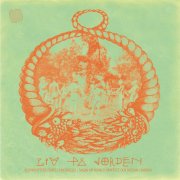 |
7" (2010) ***/T½ Blomkraftens Frukt Knegareliv Sagan om Harald Hårfäste och Hassan-i Sabbah |
Current availability:
Mellotron used:
Going by their Blomkraftens Frukt three-track EP, Liv på Jorden (known as Life on Earth on several other releases) are yet another raucous Scandinavian psych-tinged garage band, at their loudest on the title track and their psychest on Sagan Om Harald Hårfäste Och Hassan-I Sabbah (spot the Hawkwind reference).
David Svedmyr plays his MkVI Mellotron on Sagan Om Harald..., with Chamberlin male and female voices and vibes, which I had originally assumed were sampled. On a closer listen, however, the skronky pitchbends on the male voices are entirely authentic.
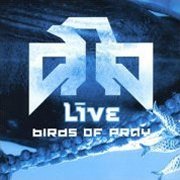 |
Birds of Pray (2003, 44.29) **½/½ |
|
| Heaven She The Sanctity of Dreams Run Away Life Marches on Like I Do Sweet Release Everytime I See Your Face |
Lighthouse River Town Out to Dry Bring the People Together What Are We Fighting for? |
|
Current availability:
Chamberlin used:
To my surprise, the appallingly-named Live have been around in one form or another since the early '80s, releasing their first album under this name, Mental Jewelry, in 1991. Their major breakthrough came with '94's multi-million selling Throwing Copper, since when they seem to've struggled slightly to maintain their momentum. 2003's Birds of Pray was their sixth release; I don't seem to be alone in saying that it was clearly a water-treading exercise, full of the sort of bland, mainstream rock peddled by the likes of Train, or even the horrible Matchbox Twenty, although, in fairness, nowhere near as bad as the latter. I've seen them described as 'post-U2 arena rock', which is about as close as you're going to get, to be honest, Christian-lite lyrics and all. Best tracks? I could listen to this a dozen times (although I'd much rather not) and still be unable to answer that question, due to the anodyne nature of their vaguely anthemic, hollow songs. At least it's relatively short.
The ubiquitous Patrick Warren was brought in on Chamberlin, along with a small string section, but guess what? It's as near-as-dammit inaudible, as always. Why do producers do this? What is the point in bringing in a keyboard as distinctive as the Chamberlin, then burying it in the mix? There's something completely unidentifiable on Run Away and an extremely brief burst of strings on Out To Dry, which may be the string quartet anyway, with nothing else even slightly Chamby-like. Pointless. Ugly sleeve, too. So; if you like hollow, anthemic rock, you'll like Live. As for the rest of us, shall we go somewhere else?